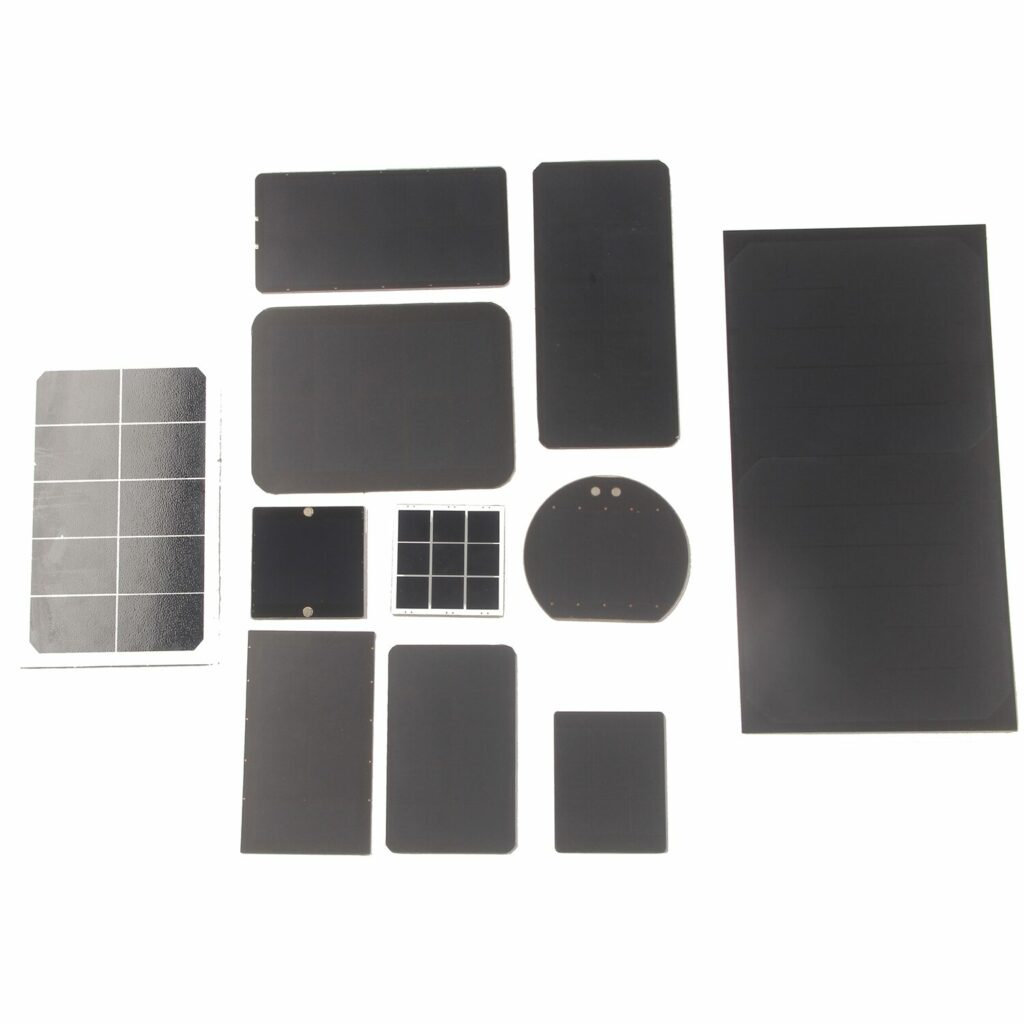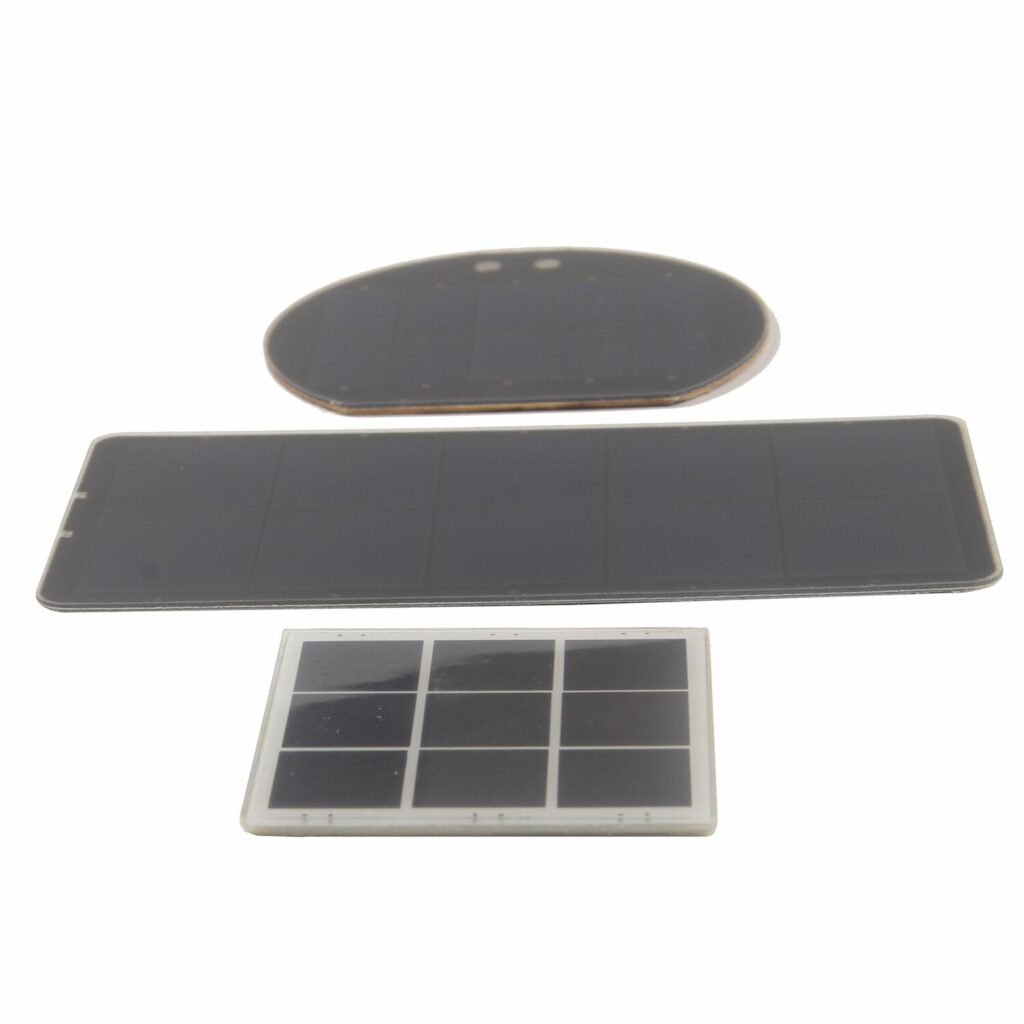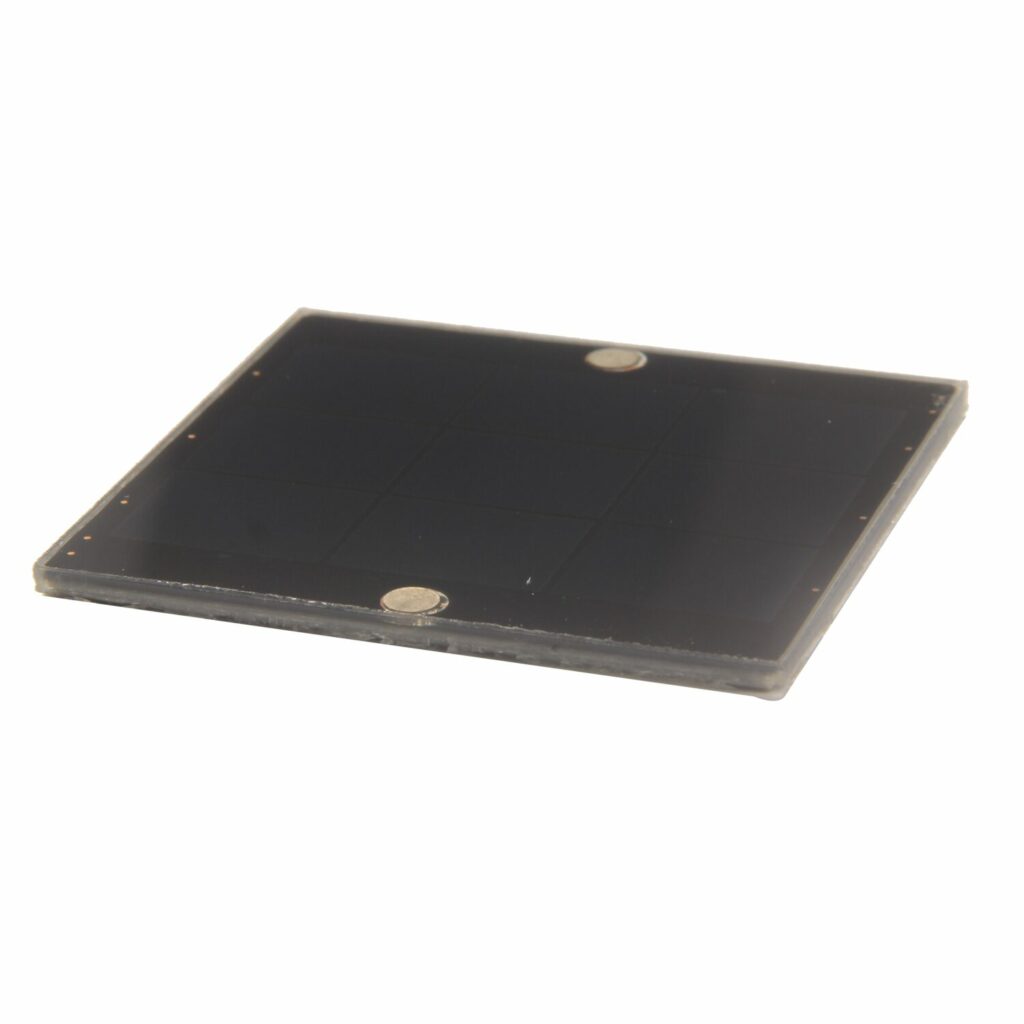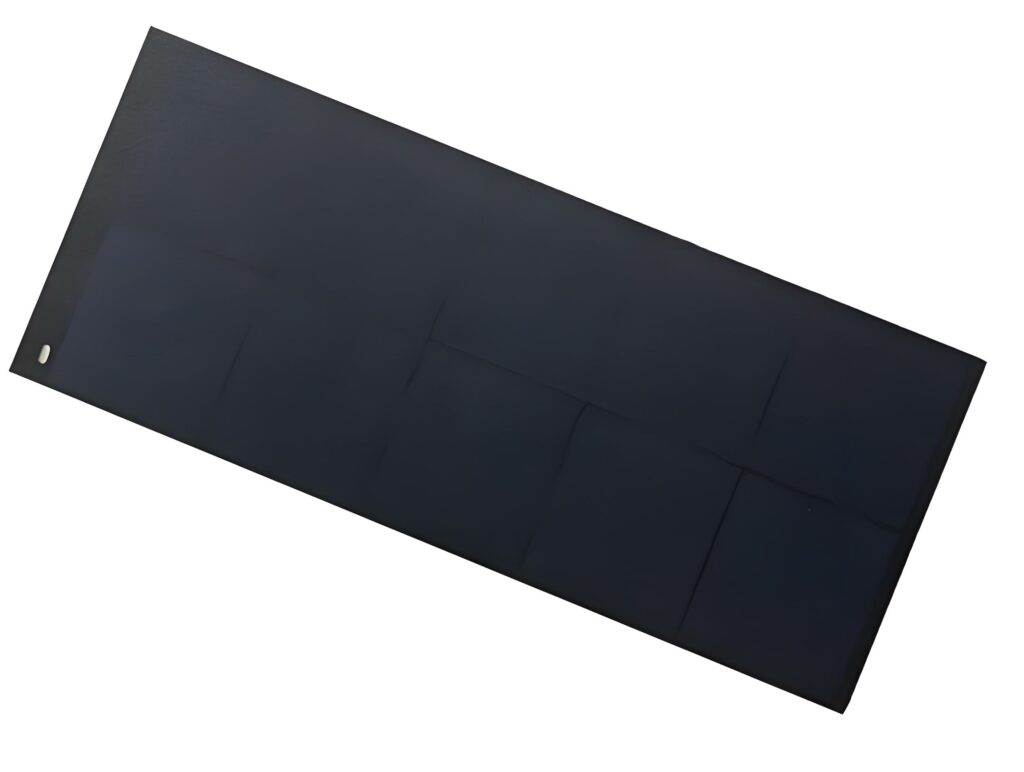Phone:
(701)814-6992
Physical address:
6296 Donnelly Plaza
Ratkeville, Bahamas.

Need small solar panels for your compact power needs? In this article, we explore some of the smallest solar panels available and their practical applications in DIY projects and small devices.

Mini solar panels have become a pivotal innovation for those who love DIY projects. Such small solar panels are powerful yet small, making them perfect energy sources for several low-power undertakings. Take the 5V 30mA mini solar panel as an example. It’s merely around 2.08 x 1.18 inches in size and fits seamlessly into confined spaces while being able to produce over 5 volts in full sun, thus providing electricity to tiny electronics and sensory devices.
The capability of these small solar panels to be customized is one of their standout features. Providers like LINKSOLAR offer bespoke solutions that align with the specific demands of various ventures—a boon for do-it-yourselfers requiring distinct voltage and current specifications tailored to each unique project such as Arduino initiatives, diminutive robotics or even compact portable chargers.
But these ultra-compact solar panels aren’t limited to hobbyist endeavors. They also breathe power into smaller gadgets we use daily. Picture a minute-sized solar panel sitting conveniently on your workstation, recharging your Bluetooth speaker or operating a little fan—these applications underscore not only convenience but also the importance of harnessing sustainable energy from our everyday surroundings.
For individuals inclined towards incorporating clean energy effortlessly into their lives, these miniaturized power cells prove ideal: integrating renewable sources has never been more straightforward or practical thanks primarily due to easy usage and efficient output metrics essential within today’s context focused upon ecological mindfulness.
Micro solar cells that boast high efficiency are a superb choice for tapping into solar power in areas with limited space. These cells operate efficiently at 0.5V, producing 400mA, which is perfect for small-scale projects requiring reliable energy sources. With dimensions of only 52mm by 19mm, they can be integrated into numerous designs while minimizing spatial requirements.
Crafted from polycrystalline silicon, these diminutive solar cells achieve an impressive efficiency range between 21.5% and 23.5%. Such high-efficiency levels are vital in scenarios where available space is scarce, yet the demand for maximum power extraction from sunlight is essential to enhance both performance and dependability of the project using them.
For those seeking a potent yet compact solution to their energy needs—such as powering wearable devices powered by solar technology, petite sensors or miniature robots—the utilization of these high-efficiency micro-solar cells proves invaluable. They supply requisite power without contributing excessive bulkiness to your endeavor’s design footprint thereby cementing their role as integral components within cutting-edge innovative undertakings.

Monocrystalline solar panels are favored for their high efficiency and attractive design. They often come with a sophisticated black look, preferred by many over the blue tint seen in polycrystalline variants. In terms of performance, monocrystalline options surpass 23% efficiency, enabling them to generate more power while requiring fewer panels—an ideal feature when space is at a premium.
For petite solar endeavors, items such as the 10-piece set of 50mm x 50mm 2V 160MA kits are frequently selected. These kits provide an efficient and compact solution to harness solar energy within tight spaces. Thanks to their superior efficiency, monocrystalline panels can deliver higher amounts of electricity per square inch than those made from polycrystal materials. This makes them exceptionally suitable for small-scale projects that require significant power.
Opting for miniature monocrystalline solar panels proves beneficial when it’s crucial to optimize energy production. Regardless if you’re supplying power to a singular gadget or an array of sensing devices, the formidable efficiency coupled with condensed dimensions guarantee maximum usage of sunlight exposure.
This heightened level of effectiveness leads to enhanced device operation and prolonged active periods between charges or use intervals—positioning monocrystalline solar panels as reliable and potent selections for your assortment of solar-powered applications.
Polycrystalline solar panels serve as an excellent choice for powering small gadgets and applications with low energy demands. A polycrystalline solar panel, with dimensions of 68mm by 37mm and a power output of 5V at 60mA, is perfectly suited for homemade projects. These high-efficiency panels are especially useful for energizing low-power devices and toys, proving their reliability in situations where sunlight may be minimal.
These particular types of panels excel in the task of juicing up small-scale electronics due to their proficiency in generating energy. This quality renders them perfect contenders for portable uses such as charging units, minor electronic items, or solar-driven playthings. Their lightness and reduced size. Add to the convenience factor when transporting these power solutions outdoors.
For continuous electricity delivery to petite appliances, the superior conversion prowess exhibited by polycrystalline solar panels is crucial. They stand out not only on self-initiated engineering endeavors, but also shine as mobile chargers offering steadfast access to solar power. The fusion of sleek construction coupled with commendable performance even under subdued lighting conditions underscores their adaptability across a diverse range of utilizations.

Small solar panels have a broad range of applications, providing power for numerous compact electronic gadgets. These tiny panels are particularly useful in energizing items such as microcontrollers, LED lights, and miniature fans. With their widespread use in projects involving Arduino and battery charging scenarios, they’ve become essential tools for enthusiasts who enjoy DIY endeavors.
Such petite solar modules are frequently found powering playthings that operate on solar energy, various lighting setups, and an assortment of small-scale electronics. They serve as a sustainable alternative to traditional power sources by offering green energy solutions. An example is the use of these panels in garden lights which illuminate outdoor spaces without necessitating electrical cables.
Beyond merely serving recreational or practical purposes at home or personal projects. Diminutive solar cells contribute significantly to educational initiatives and scientific research efforts. Utilized within sun-powered models used for demonstration or education kits designed for hands-on learning about renewable energies—these units provide invaluable aid in academic settings. When applied to science-based experiments. They enable investigations while promoting sustainability principles.
In locales where access to standard electricity grids isn’t possible or preferred. Miniature photovoltaic devices greatly enhance living conditions by replacing older methods like using kerosene lamps—which can be both inefficient and hazardous—with cleaner technology options available through advancements made with these portable systems when paired alongside suitable batteries storage systems enables continued usage even during times lacking sufficient sunlight exposure (i.e., overnight periods).

Selecting solar panels for outdoor applications necessitates considering both durability and resistance to weather elements. Enhanced by epoxy coatings, mini solar panels are fortified against severe weather conditions, safeguarded from potential damage so they can perform reliably even under extreme temperatures or during inclement weather.
A common feature among these panels is an IP67 rating, which signifies their proficiency in repelling water and dust—an essential quality for outdoor deployment where precipitation and particulates pose a threat. The integration of epoxy coatings alongside PET laminates on these products ensures not only superior endurance but also prolongs the service life of the panels through robust wear-and-tear protection.
With their compact size enhancing portability along with notable toughness, such mini solar panel systems are exceptionally suited to meet the power needs amidst adventurous undertakings like camping or hiking as well as professional fieldwork that demands rugged equipment. These attributes render durable and waterproof mini solar panels excellent options when seeking out an energy solution that’s reliable enough to handle demanding outdoor settings efficiently.
Joining several small solar panels can be an effective way to increase power for more demanding projects. By wiring micro solar cells together in either a series or parallel arrangement, you have the option to enhance their collective voltage and current output. Such adaptability enables precise tuning of the energy produced, catering specifically to augmenting voltage or amplifying current based on your project’s needs.
For instance, kits such as the 60 Watt Portable Foldable Solar Panel pack come with a 10 AMP charge controller designed for optimal energy regulation. These devices maintain controlled power delivery so that your electronics are powered consistently and without fluctuation. The combination of multiple panels linked with a charge controller lets you fashion a robust and efficient setup suited precisely for your solar-power objectives.
Grasping the method behind linking numerous small solar panels is key to tapping into their full capabilities. It’s vital whether one aims to create something like a mobile solar charger, energize an array of sensors or devise an independent off-grid power solution. Managing how these elements function collectively is essential in harnessing maximum efficiency from your interconnected network of small-scale panel systems.
Armed with this knowledge, you’re equipped not only to engineer but also scale up practical applications driven by sustainable sources like solar technology—effectively crafting solutions that meld efficacy with expansibility.

When choosing a mini solar panel for your project, it is essential to consider the specific output characteristics and material properties. For example, selecting a solar panel that provides a nominal 5V output along with a peak current of 200mA could be critical for certain applications. It’s imperative to match these specifications with the needs of your project in order to achieve maximum efficiency.
There are distinct differences between monocrystalline and polycrystalline solar panels. Monocrystalline variants typically offer higher efficiency levels and come in an elegant black color, whereas polycrystalline types usually possess lower efficiencies alongside their signature blue tint. Both kinds maintain considerable longevity exceeding 25 years, which means durability should not drastically sway your decision when considering different materials.
By meticulously examining both the power output requirements as well as the material distinctions associated with each type of panel, you can pinpoint a mini solar solution that aligns precisely with your objectives. Whether you hold efficiency, aesthetics or budgetary constraints at top priority. Gaining clarity on these elements will ensure you select wisely — ultimately enhancing how effectively and dependably your projects harness solar energy.
Purchasing economical mini solar panels without sacrificing quality is crucial for consumers mindful of their budget. There are several cost-effective models available under $20 that don’t skimp on efficiency. For example, the 5V 60mA solar panel stands out as an excellent value pick, ideally suited for small electronics and costs less than $20.
There’s a wallet-friendly option with the 2V 160mA mini solar cell monocrystalline kit priced below $20 as well. These panels come in various power outputs, featuring voltage levels like 5V and current capacities from 30mA up to 160mA.
Hobbyists keen on do-it-yourself projects will find the affordable yet efficient performance of the compact-sized 5V 30mA mini solar panel quite appealing. While being reasonably priced, these robust panels maintain durability and operational effectiveness—qualities typically sought after by users. This particular model has dimensions measuring at just about 30 mm.
Opting for these lower-priced selections allows one to harness solar energy economically while expanding access to this technology across a broader spectrum of users interested in sustainable power sources.
To sum up, the realm of mini solar panels presents a vast array of choices for numerous uses, including do-it-yourself endeavors, mobile gadgets, and remote power setups. Grasping the assorted varieties of panels—considering their efficacy, robustness, and connection methodology—is crucial for effectively tapping into solar energy. These compact solar powerhouses offer an eco-friendly and cost-effective method to incorporate green energy into your daily routine. Seize the possibilities offered by mini solar panels and revolutionize your initiatives with sun-derived power.
A 500 watt solar panel can run small to medium-sized appliances, such as LED lights, a laptop, a small refrigerator, a fan, or a TV, as long as their combined consumption does not exceed 500 watts.
This versatility makes it suitable for various everyday needs.
Ultra-compact solar panels, such as the 5V 30mA models, usually measure about 2.08 x 1.18 inches, making them perfect for DIY projects with limited space.
Their small size allows for easy integration into various applications.
High-efficiency micro solar cells are highly effective, achieving efficiency rates between 21,5% and 23,5%. This makes them suitable for a variety of small-scale applications.
Monocrystalline solar panels of a smaller size deliver an impressive efficiency rate that can exceed 23%. This high level of efficiency enables them to produce more electricity using fewer panels.
These panels come in an attractive sleek black design, which boosts their visual appeal and makes them a favored option for numerous installations.
Yes, budget-conscious buyers can find affordable mini solar panels for under $20, including options like the 5V 60mA and the 2V 160mA mini monocrystalline solar panels, which provide solid performance and durability.